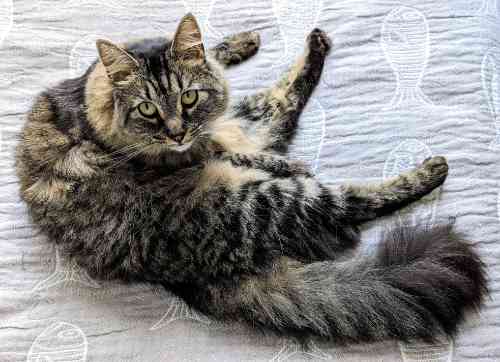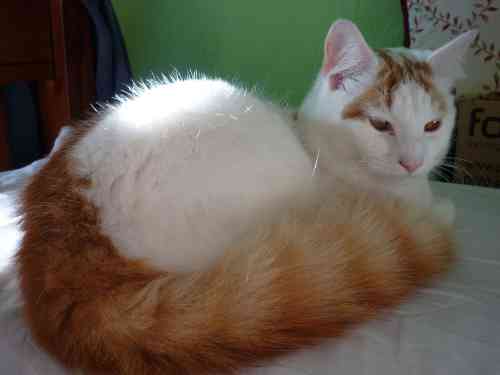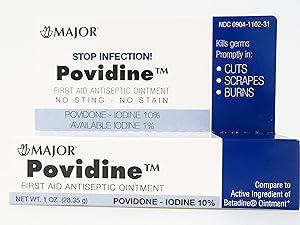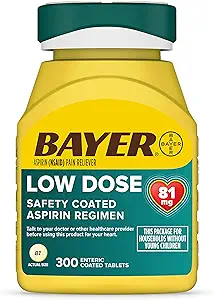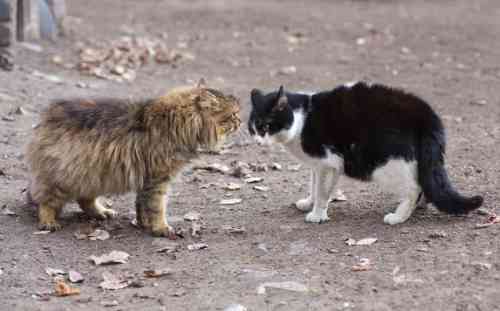Best way to treat a bruised tail in your cat
Do you have the feeling that your cat has a bruised tail? We explain to you what a bruised tail is and what symptoms you can see in your cat. We also tell you how you can determine the possible cause. But most important of all is how you can treat it yourself without having to go to your vet. So read on to find out how you can help your cat.
What is a bruised tail in a cat?
A cat’s tail is bruised when the soft tissues of the tail are damaged. The damaged cells of the bruised tail release substances that let your cat’s body “know” that there is damage in his tail and that it needs to be cleaned up. To achieve this, more blood is sent to that location by opening up the blood vessels. And the blood vessels also allow more fluid to seep out. Due to these two clearing mechanisms, the tail gets a somewhat darker red color (difficult to see if there is still fur on the tail) and the tail becomes thicker at the site of the bruise.
In addition, a large number of immune cells are also sent there to clean up the damaged cells and leave everything tidy.
What causes a bruised tail in a cat?
In principle, a bruised tail almost always occurs as a result of an accident or fight. Car accidents in particular often force a cat’s tail into a position that the soft tissues of the tail are not made for. So we mainly mean the muscles and tendons. With a bruise, no bones are broken and the bones are therefore still in their normal position. However, the muscles and tendons are stretched too far or even were torn a little. Another reason for a bruised tail in a cat is that the tail regularly gets stuck in a closing door. Or he was pulled quite hard by his tail by someone from the neighbourhood. These are all reasons why the soft tissues of the tail have become damaged. And the body has to clean up that damage.
Symptoms you see in case of a bruised tail in a cat
There are many symptoms you may notice in your cat if he has a bruised tail.
- He holds his tail lower than he normally does
- Your cat is in pain when you examine his tail
- His tail feels thicker than normal, usually very locally somewhere on the tail
- If the coat is also partly gone, you will often see skin with a darker red colour than normal skin
- If there is also nerve damage, the tail may also hang completely limp and be (temporarily) paralysed
- Your cat uses his tail less than normal
He may meow more plaintively than you are used to - Your cat licks his bruised tail a lot
- He may have problems with his balance. Research by Curt Walker has shown how important good tail mobility is in maintaining balance on narrow surfaces. This mobility is now less and so his balance is also less.
There is no bruised tail if the tail has a kink (in which case it is broken) or if your cat has a fever (in which case it has an abscess). You will never see these symptoms in a bruised tail in a cat.
How do you treat a bruised tail in a cat?
Examine your complete cat
If your cat has just come home with a painful, swollen tail, it is important that you take a full look at your cat. So check to see if he has any new broken teeth. Or that he has frayed nail tips. Are there some larger scuff marks? These are all things that we mainly see if your cat has been in a collision. The blow may have been quite large and there is therefore a risk of internal bleeding in his organs. See if his gums are a nice pink color and if he can breathe normally. Do you have any doubts about this? Then visit your vet to be sure. After all, your cat can die from internal bleeding.
Next, take a good look at his tail. Do you see small wounds? Then there is a good chance that your cat has had a fight with another cat. In that case, it is important that you disinfect the wounds with iodine ointment to prevent the formation of abscesses. After all, cats are very sensitive to this.
Cooling the tail
Do you see no wounds and does your cat otherwise appear to be in a normal condition? Then you can cool his tail with a cool pack. Wrap this in a clean tea towel and hold it against the most swollen part of the tail for about 10 minutes. Cooling causes the blood vessels to contract slightly so that less fluid seeps out of the blood vessels. This will prevent his tail from swelling up much more.
Doesn’t your cat want to cooperate with you? Then just leave it for what it is. It is counterproductive if you force your cat to cool its tail.
Stimulate healing and treat pain
Applying an ointment is insufficient to stimulate the healing of the tail tissues. Unfortunately, the ointment does not penetrate deep enough into the tissues. To help heal a bruised tail in your cat, it is best to use Hemp oil. From a study done by Cindy H.J. Yu and H.P. Vasantha Rupasinghe shows that hemp oil has a very good anti-inflammatory effect and also has an analgesic effect. Very nice if your cat has pain in its tail.
Give extra painkiller
If giving CBD oil does not provide sufficient pain relief for your cat, you can also give him Aspirin for a few days. NB!! OTHER TYPES OF PAIN KILLERS SUCH AS PARACETAMOL OR IBUPROFEN ARE FATAL TO CATS! You can only use Aspirin to support your cat. In that case, give your cat half a tablet of a 100mg tablet once every 2 days. So not twice a day!! Only once every 2 days. Only that dosage is safe to give to your cat. Also give him this for a maximum of a week.
It is preferable to give a painkiller that is made for cats. For example, Metacam, Rimadyl, Carprodyl, Onsior, etc. If you still have it at home, it is preferable to give it to your cat. However, most people no longer have that at home. And your vet may only prescribe it if he or she has had your cat for a consultation.
Heat compresses
You may be thinking, heat compresses? But it has just been written that you have to cool down. Yes that’s right. First of all, you need to cool it to reduce the swelling of your cat’s bruised tail as much as possible. But after 48 hours, your cat’s body is already well on its way to cleaning up the damaged tissues itself. You can improve this cleanup by applying warm compresses to the bruised tail. Your cat will probably tolerate this a little better now than the cold compresses did in the beginning. In principle, you can also use the above cool packs as a heat compress. However, the cherry stone pillow below works slightly more conveniently in practice, which is why we are showing it here.
Protect the tail from excessive licking
If your cat has a bruised tail, it is often painful. Despite the painkiller, your cat may decide to lick it. A little licking won’t hurt. In fact, its massaging effect even stimulates healing. But some cats go so far as to lick their fur and then their skin. And then there is even more trouble than just a bruised tail. In that case, it is best to protect his tail from your cat’s tongue. You do this by putting a protective collar on him.
Can a bruised tail in a cat heal on its own?
Of course. In principle, a bruised tail in your cat will heal on its own. This can sometimes take quite a long time, about three weeks. However, if you help him with the above advice, you will shorten this period considerably and also reduce his pain.
Does your cat not cooperate in any way with your well-intentioned attempts to help him? Then it is not necessary to treat him per se. It will also heal on its own. However, keep a close eye on your cat’s bruised tail. If something goes wrong, you will quickly notice it and you can act accordingly.
When should you take your cat to the vet if he has a bruised tail?
If your cat’s bruised tail has a kink, it is probably broken. In that case, the position of the tail is crooked, so that the tail will also grow back together in a crooked position again. That is reason to go to your vet.
It is also important to go to your vet if larger wounds are visible on the tail or if your cat shows significantly unusual behaviour. After all, it is possible that there is more going on than just a bruised tail.
If the swelling only increases every day, it is also wise to visit your vet. Bleeding or an abscess may then occur. Both are better treated by your vet.
Get well soon!
Hopefully you have enough information to help your cat heal its bruised tail in the coming weeks. To him we say “Get well soon” and good luck to you!

